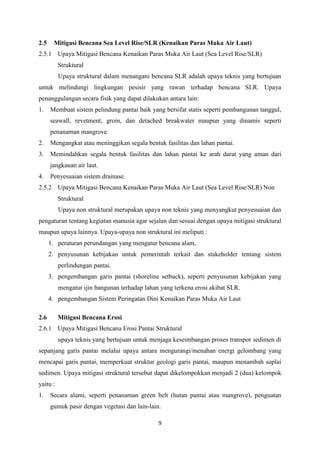Ohio Train Derailment: The Impact Of Lingering Chemical Residues On Buildings

Table of Contents
Types of Chemical Residues and Their Impact
The derailment released a cocktail of hazardous chemicals, the most concerning being vinyl chloride and butyl acrylate. Understanding their individual and combined effects on buildings is crucial for effective remediation.
Vinyl Chloride: A Carcinogenic Threat
Vinyl chloride is a highly volatile and known carcinogen. Inhalation can lead to immediate respiratory issues, while long-term exposure significantly increases the risk of various cancers and other severe health problems.
- Building Contamination: Vinyl chloride can penetrate porous building materials such as brick, wood, and even concrete, leaving behind lingering residues.
- Testing and Remediation: Specialized air quality testing is essential to identify the presence and concentration of vinyl chloride. Remediation may require extensive measures, including the removal and replacement of contaminated materials.
- Long-Term Monitoring: Long-term health monitoring for residents in affected areas is vital to assess the long-term effects of exposure.
Butyl Acrylate: Irritant and Potential Long-Term Hazard
Butyl acrylate, while not a carcinogen, is a potent irritant to the skin, eyes, and respiratory system. Prolonged exposure can lead to chronic respiratory problems and other health complications.
- Surface Contamination: Butyl acrylate can contaminate surfaces and penetrate porous materials, similar to vinyl chloride.
- Remediation Challenges: Thorough cleaning is crucial, and in cases of severe contamination, replacement of affected building materials may be necessary. Indoor air quality must be carefully assessed and improved.
- Health Impacts: Long-term effects of butyl acrylate exposure require ongoing research and monitoring to fully understand its potential consequences.
Other Released Chemicals: A Complex Mixture
Beyond vinyl chloride and butyl acrylate, other chemicals were released during the Ohio train derailment. The exact composition and quantity of these substances are still being assessed, but their presence adds another layer of complexity to the remediation process. A comprehensive chemical analysis of affected areas is necessary to fully understand the extent of the contamination. The potential for synergistic effects – where the combined impact of multiple chemicals exceeds the sum of their individual effects – cannot be ignored. This uncertainty highlights the need for ongoing monitoring and research into the long-term environmental and health consequences.
Assessing and Addressing Building Contamination
Effective remediation requires a multi-faceted approach starting with a thorough assessment of the contamination.
Initial Assessment and Testing
A comprehensive environmental assessment is the first step towards effective remediation. This involves:
- Air Quality Testing: Analysis for volatile organic compounds (VOCs), including vinyl chloride and butyl acrylate, to determine air quality levels within affected buildings.
- Surface Sampling: Testing of surfaces within buildings to identify the presence and concentration of chemical residues.
- Soil Testing: Assessment of subsurface contamination to determine the extent of the problem and guide remediation strategies.
Remediation Strategies
Remediation strategies will vary depending on the severity and extent of contamination. Potential methods include:
- Decontamination of Surfaces: Cleaning, scrubbing, and specialized treatments to remove surface contaminants.
- Removal and Replacement: In cases of severe contamination, removal and replacement of affected building materials may be necessary.
- Air Purification: Installation and use of air purification and ventilation systems to improve indoor air quality.
- Long-Term Monitoring: Continued testing and monitoring are crucial to ensure the effectiveness of remediation efforts and to identify any potential long-term issues.
Cost and Responsibility
The financial burden of remediation is substantial and raises complex questions of responsibility.
- Insurance Coverage: Homeowners should explore their insurance policies to determine the extent of coverage for property damage and remediation costs.
- Legal Recourse: Legal action against Norfolk Southern Railway, the operator of the train, may be necessary to secure compensation for damages.
- Governmental Involvement: Governmental agencies play a vital role in overseeing cleanup efforts and providing support to affected residents.
- Long-Term Costs: The long-term costs associated with ongoing monitoring and potential future remediation efforts must be considered.
Health Risks Associated with Chemical Exposure
Exposure to the chemicals released in the Ohio train derailment poses significant health risks, both short-term and long-term.
Short-Term Health Effects
Immediate symptoms of exposure can include:
- Respiratory Problems: Coughing, shortness of breath, wheezing.
- Skin Irritation: Rashes, itching, burning.
- Eye Irritation: Burning, watering, redness.
- Seek Medical Attention: Anyone experiencing these symptoms should seek immediate medical attention. Evacuation and temporary relocation may be necessary in cases of severe exposure.
Long-Term Health Effects
Long-term exposure to low levels of these chemicals can lead to:
- Increased Cancer Risk: Certain chemicals released during the derailment are known carcinogens.
- Chronic Respiratory Diseases: Asthma, chronic bronchitis, and other respiratory illnesses.
- Other Health Complications: The long-term health effects of many of these chemicals are still being investigated.
- Ongoing Medical Monitoring: Regular medical checkups are crucial for those exposed to these chemicals.
Protecting Vulnerable Populations
Children, the elderly, and individuals with pre-existing health conditions are particularly vulnerable to the effects of chemical exposure. Specific precautions are necessary to safeguard these populations. Access to healthcare and support services is critical for these vulnerable groups.
Conclusion
The Ohio train derailment underscores the devastating and long-lasting consequences of chemical spills. The lingering impact of chemical residues like vinyl chloride and butyl acrylate necessitates immediate and comprehensive action. Thorough testing, effective remediation strategies, and ongoing health monitoring are crucial for protecting the health and well-being of residents and mitigating the long-term effects. For further information on Ohio train derailment cleanup efforts and potential health risks from chemical residues, consult local health authorities and environmental agencies. Don't hesitate to seek professional advice if you suspect your property has been affected by the Ohio train derailment's chemical residues. Protecting your home and family from the lingering effects of this environmental disaster requires proactive engagement and informed decision-making.

Featured Posts
-
 Lindungi Warga Pesisir Dpr Dorong Pembangunan Giant Sea Wall Untuk Mitigasi Bencana
May 15, 2025
Lindungi Warga Pesisir Dpr Dorong Pembangunan Giant Sea Wall Untuk Mitigasi Bencana
May 15, 2025 -
 Will The Knicks Offense Recover Quickly After Brunsons Return
May 15, 2025
Will The Knicks Offense Recover Quickly After Brunsons Return
May 15, 2025 -
 2023 Mlb Dfs May 8th Sleeper Picks And Hitter Projections
May 15, 2025
2023 Mlb Dfs May 8th Sleeper Picks And Hitter Projections
May 15, 2025 -
 Nbas 50 000 Fine Anthony Edwards And The Fan Incident
May 15, 2025
Nbas 50 000 Fine Anthony Edwards And The Fan Incident
May 15, 2025 -
 Pinch Hit Magic Gurriel Delivers Rbi Single Padres Win
May 15, 2025
Pinch Hit Magic Gurriel Delivers Rbi Single Padres Win
May 15, 2025
